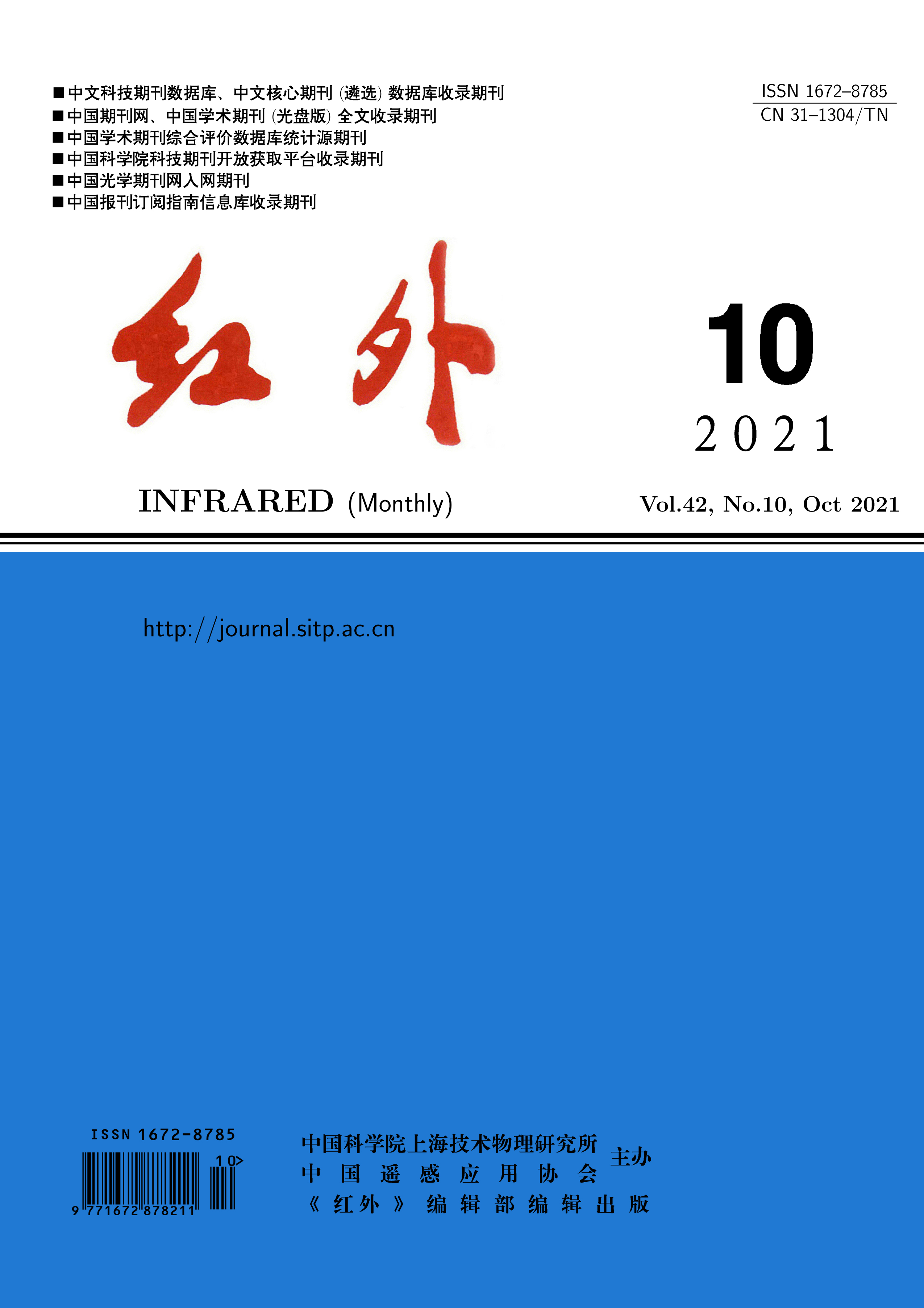
The surface defects of short.wave infrared indium gallium arsenide (InGaAs) detector materials are one of the core problems in the development of large.scale small.pixel focal plane arrays, and the surface defects of extended.wavelength detector materials with lattice mismatch to the substrate are particularly difficult to control. The temperature setting of indium cell in molecular beam epitaxy (MBE) system is optimized. The results show that the surface defect density of short.wave infrared lattice.mismatched In0.83Ga0.17As detector material is the lowest when the temperature difference between the top and bottom of the indium cell is 130℃, thus effectively reducing the surface defect density of the material from about 3000 cm-2 to about 500 cm-2. Combined with the room.temperature photoluminescence test of the short.wave infrared lattice.mismatched InGaAs materials, the analysis shows that the optimal temperature difference between the top and bottom temperatures of the indium cell is due to the combined effect of the two mechanisms of oval defects caused by indium metal droplets and impurities at the top of the cell. The lattice.mismatched InGaAs detector materials with low surface defect density prepared in this paper laid the foundation for the development of high.performance extended.wavelength short.wave infrared focal plane arrays.
Wuhan Guide Infrared Co., Ltd. has successfully developed a 1280×1024 large.format HgCdTe mid.wave infrared focal plane detector with a pixel size of 12 m×12 m. On the basis of optimizing and improving the performance of materials, the key technologies such as passivation of small pixel, preparation of high.density and small.size indium column, and high.precision and large area array reverse welding have been broken through. The 1280×1024@12m mid.wave HgCdTe infrared focal plane chips and components were successfully fabricated. The default pixel rate is less than 0.5%, and the non.uniformity of response rate is less than 5%. The average noise equivalent temperature difference (NETD)of F2 detector is 15 mK, and the average peak detection rate is 6×10 11 cm·Hz 1/2·W -1. The average NETD of F4 detector is 18.5 mK, and the average peak detection rate is 1.2×10 12 cm·Hz 1/2·W -1. In addition, a method for testing unstable pixels is proposed. By analyzing the image data after two.point correction and comparing the median value of the module with the spatial noise, the detection and correction of unstable pixels in infrared image are completed. After correction, the infrared imaging quality is good, and the performance of the device does not decrease obviously at 120 K.
Infrared thermal imager has developed rapidly in the field of military and civilian applications. How to objectively evaluate the imaging effect of the infrared thermal imager has become a problem that must be solved, which not only provides quantitative mathematical description for the imaging performance of the infrared thermal imager, but also provides the supporting basis for the study of the image sharpness, target detection distance and target tracking performance of the infrared imaging system. The imaging evaluation system of thermal infrared imager proposed in this paper has the functions of infrared image data acquisition and processing. It is used in conjunction with a target system for infrared imaging evaluation (composed of a black body, a radiation target console, a collimating optical system, and a digital display precision turntable) to test and evaluate infrared image data. The system has designed the main performance indexes, mathematical model andsteps of image evaluation. The main performance indicators including image non.uniformity(NU), signal transfer function (SiTF) , noise equivalent temperature difference (NETD), angular linearity (AL) , target imaging positioning angle error (TIPAE) and other main evaluation technical indexes. After testing, the performance of the system is very superior and it becomes the necessary debugging and testing equipment in the development of infrared thermal imager.
At present, the roughness of the laser welding line of the dewar package of the infrared detector is large. The strength and internal vacuum of the dewar welding line during the long.term use of the detector components are not good, which affects the life and performance of the detector. In order to solve these problems, it is proposed to apply laser polishing technology to the polishing treatment of laser welding line of dewar components. The experiment investigated the influence of main parameters on the polishing quality, and the laser polishing results were tested using the laser confocal microscope. The results show that the laser polishing technology can reduce the surface roughness Ra of the laser welding line from 0.25 mm to 0.03 mm. This fully proves that the use of green, efficient, non.contact laser polishing can achieve high.quality polishing of the laser welding line of the outer surface of the infrared detector dewar components, which has great potential application value in the field of infrared detector manufacturing.
Optical spectrum analyzer (OSA) is an important test and analysis instrument in the field of optical communication. It is mainly used for testing the spectral properties of the light sources, fibers and optical elements. On the basis of introducing the basic principle of OSA, the elaborate calibration method of the wavelength is studied. Firstly, the relationship between the wavelengths and the samples as well as the detection band is analyzed. Then the tunable laser,the wavemeter and the least square method are used to calibrate several characteristic wavelengths. Finally, the verification experiments are made by using the near.infrared spectrum test system. After the calibration, the accuracy of the wavelengths is controlled within ±0.3 nm,which can meet the requirement of the specifications.
The stochastic resonance(SR)in a time.delayed bistable system driven by square.wave signal under the action of multiplicative and additive colored noise and additive asymmetric dichotomous noise is studied. Based on the small delay.time approximation, the expression of the output signal.to.noise ratio(SNR)of this system is derived under the adiabatic approximation condition. The analysis results shows that the SNR exhibits SR behavior with the change of the intensity and asymmetry of the dichotomous noise, the amplitude of the square.wave signal, and the intensity of the multiplicative and additive colored noise.The SNR varies non.monotonously with the delayed.time, correlation time of colored noises, and system parameters.










